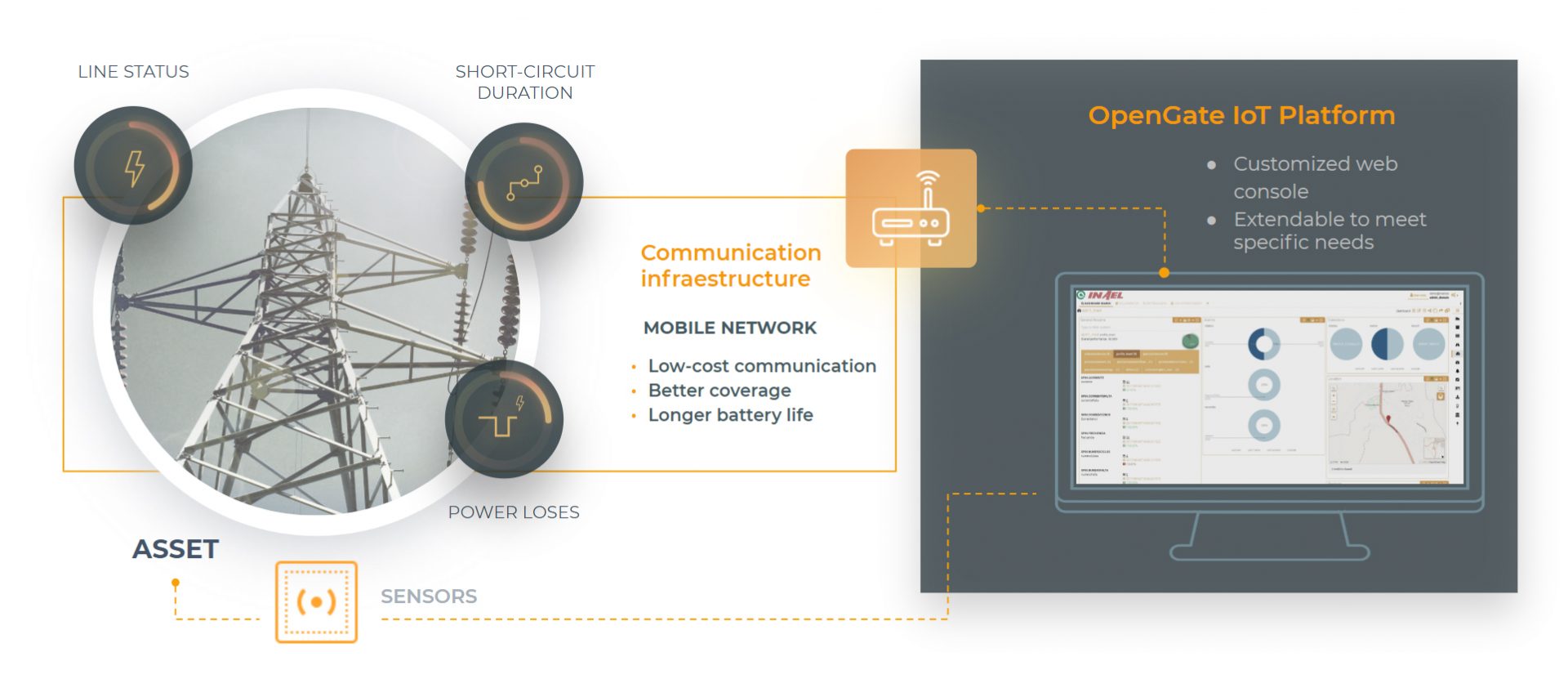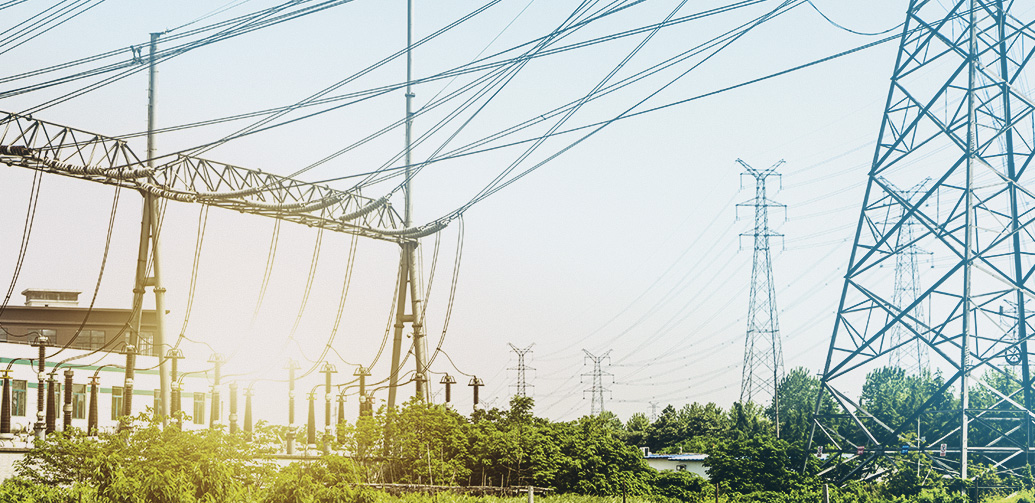The main goal:
This project’s objetive is to determine, in real time, the operational status of the different elements at the medium voltage deployed smart grid.
About the client:
Our client is an European leader in manufacturing, development and electrical equipment management for high / medium voltage networks, that also has presence in Latam, African, Asian and other international markets.
Its purpose is developing equipment for electrical distribution networks that improve energy efficiency, optimizing the protection against overloads and atmospheric interference and minimizing permanent or temporary interruptions due to short circuits or insulation problems.
Project approach:
To achieve this, amplía))) proposed to integrate OpenGate IoT Platform with client’s existing systems along with a set of new sensors. These sensors, located inside the sectionalizers, will be used to determine the operational status of the network. In addition, the solution will connect to the necessary third-party systems under a unified administration portal.
This enables not only to show where and when current errors took place, but also qualitative and quantitative historical data will be registered on the network. As a result, all this will make you able to take future business decisions with a solid foundation.
All this will be done by OpenGate as a data processing and exploitation centre that will adapt perfectly to the project, thanks to its flexibility.
Goals:
- Deployed elements monitoring
Real-time control and monitorization of different elements of the electricity network, in a centralized way.
- Identification and anomalies detection
Accurate status information and alarms to identify errors even preemptively.
- Historical and real-time data
Collect and store historical and real-time operational status for decision making.
Starting point:
At the time of starting the project, the client already had several mechanisms to monitor the medium voltage distribution networks, but only at very specific points. Not all information of the whole set was available, because of the cost of the necessary infrastructure, along with the resources means at their disposal, did not justify the investment.
With the advent of low-energy and low-cost consumption communications-based IoT infrastructures, the circumstances change. Now, the investment for the electricity sector is completely viable and it allows to considerably increase the amount of monitored elements, as well as the points where you can act. This makes it possible to have a whole picture of the current operating status of the deployed power distribution networks, at all times.
This allows electricity distribution companies to improve the quality of their service and efficiency if, in addition to all this data, they had the necessary tools and elements to act remotely and proactively on the network. There are several studies that show that 90% of errors in overhead power lines are temporary, and if the power supply is interrupted briefly after the error, the line is restored to normal by itself, without interrupting the complete supply. Then, having the capability to remotely act on the elements of the line would greatly enhance the quality of the service.
Building the solution up:
From amplía))) is being used our OpenGate IoT Platform solution that has already powerful capabilities for collection and management of the registered information by sensors and other elements of the network, such as the sectionalizers’ own data, which are integrated ad-hoc in the first stage of the project.
The integration of the sectionalizers in OpenGate platform was one of the most significant milestones, since they allow the shutdown of the lines remotely.

In addition to the opening / closing information of the sectionalizers, as well as the possibility of remotely managing them, complementary sensors are added to the solution, which monitor other aspects:
- Line status
- Short-circuit duration
- Power losses
- Average line temperature
On the other hand, each monitored element owns relevant information, such as: the installation date and notes, the assigned location of the network element on the map, or just the device configuration itself, which it’s possible to reconfigure from OpenGate remotely.
So the architecture solution would be as follows:

Connecting items and systems:
Regarding to communications between OpenGate and network elements, a low-cost and low-power consumption system will be used, which guarantees bi-directional and real-time communication with OpenGate’s southAPI (OpenGate IoT Platform info). Specifically for this project, NB-IoT has been used as communications technology and CoAP as a protocol (one of many supported by OpenGate’s Connector Factory), since they meet the aspects described above. NB-IoT falls within the category of low-power wide-area networking (LPWAN), together with another communication technologies like SigFox or LoRA, all of them integrated in our system. NB-IoT has the advantage of being a technology that works on a licensed band, thus offering many performance guarantees compared to its competitors.
Working with data:
Once communication between the different devices or assets and the platform is set up, it’s OpenGate’s engine where the integration and configuration with current systems are done. The specific needs of the project are achieved using all the OpenGate Core tools, such as data processing, analysis, remote communication and automatic rules for the management of all network elements.
Centralized management tool:
OpenGate IoT Platform has an admin portal accessible from all types of devices for the information exploitation of any solution. In addition, admin panels or dashboards can be configured in a customized way by the different users and operators of the service. This enables to display the most relevant information to each of them.
Through the portal also has its own API to grow in graphic components, it has been possible to create these modules for the exploitation of the information required by the client.
To conclude, the look & feel of the tool has been personalized to be integrated with the client’s brand identity. Thus it will be fully integrated with your business.
Conclusion:
All of this has allowed to the utility company, in a complementary way to the goal of the project, to create new business opportunities, by being able to offer to its customers a more complete management, with a superior quality of service: specific and real-time data about the operational status, besides the maintenance of each electrical tower and other network elements.
In turn, the real-time information of the system, together with the accumulated historical available, permit to define an optimal preventive and predictive maintenance strategy on the network elements. Obviously, this allows to greatly enhance operating costs and increase staff productivity and further improve the final quality of service, being an added value compared to the competitors in the sector.
Finally, we add the promotional video made especially for the IoT Solutions World Congress 2018. We talk here about this specific case, as well as you can see some of the portal administration screens mentioned above: video .

